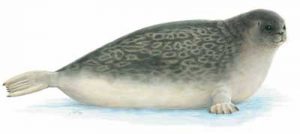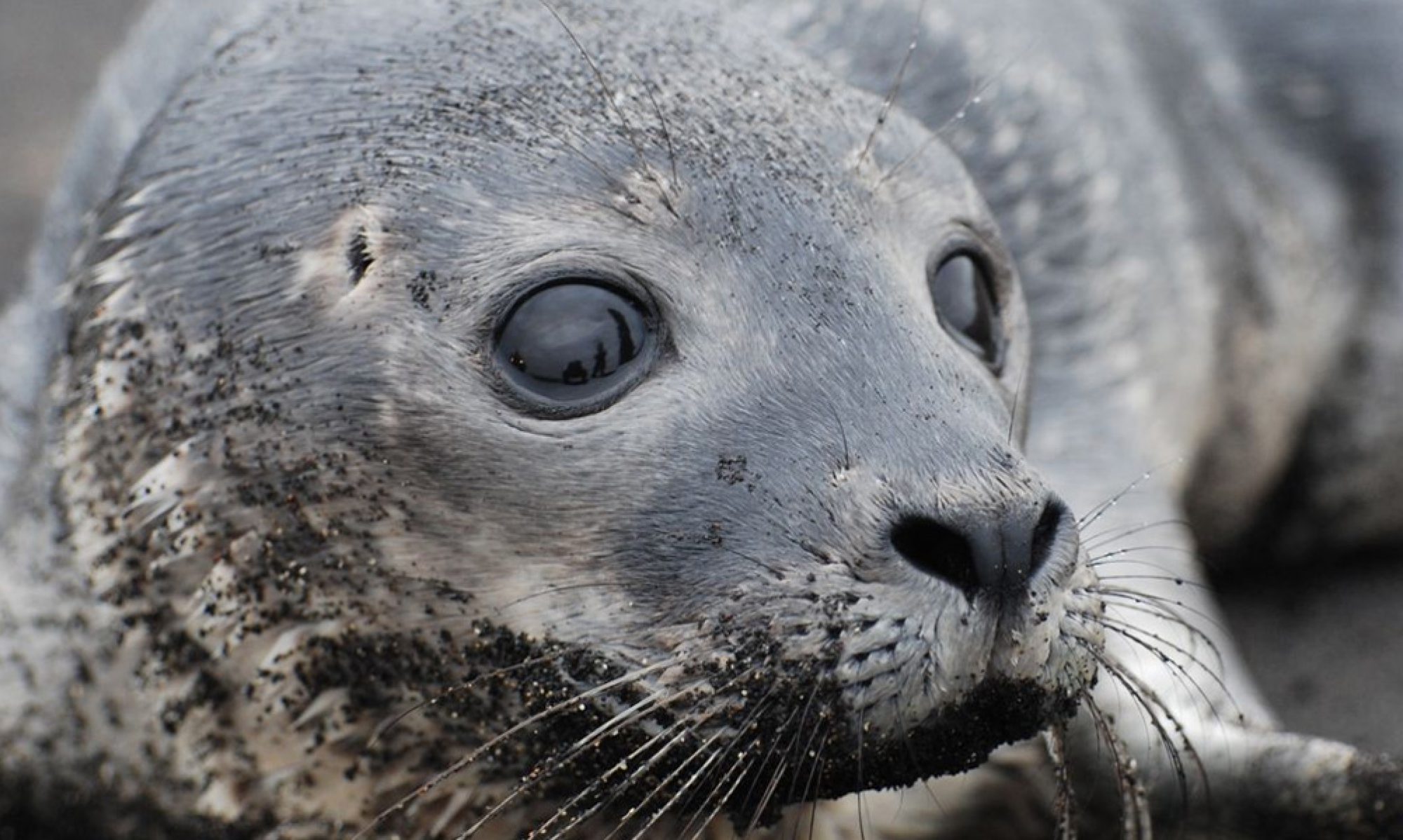
Ringed seal (Phoca hispida hispida)
The ringed seal is a symbolic animal for the Arctic North, and natives in the North Pole area have depended on it through the centuries for products such as meat, fat and sealskin. The ringed seal is the smallest of the Nordic seals and resembles the harbour seal in many ways. It draws its name from the pattern of dark circular spots surrounded by lighter circles in the fur of its back.
In March, the female gives birth to one pup in a small “snow house” that she digs beside a hole through the pack ice, which can be up to 2.5 metres thick. The seals use these holes to dive for food, and they keep them open by biting and scratching the ice. The ringed seal’s diet consists mainly of crabs and other small animals.
The ringed seal, which is rare around Iceland, travels alone or in small groups. Usually, the travelers are adult males. They make regular appearances in the Eyjafjörður area, especially around the head of the fjord in Akureyri, in the spring and early summer.
The ringed seal population is estimated at 6-7 million animals, globally. Separate populations are found in the Baltic, Otkoska and Bering Seas, and Lakes Saima and Ladoga in Finland. Two separate species of ringed seal have evolved due to their in isolation in the Caspian Sea (Phoca caspica) and Lake Baikal (Phoca sibirica) and these are only found in those bodies of water.

